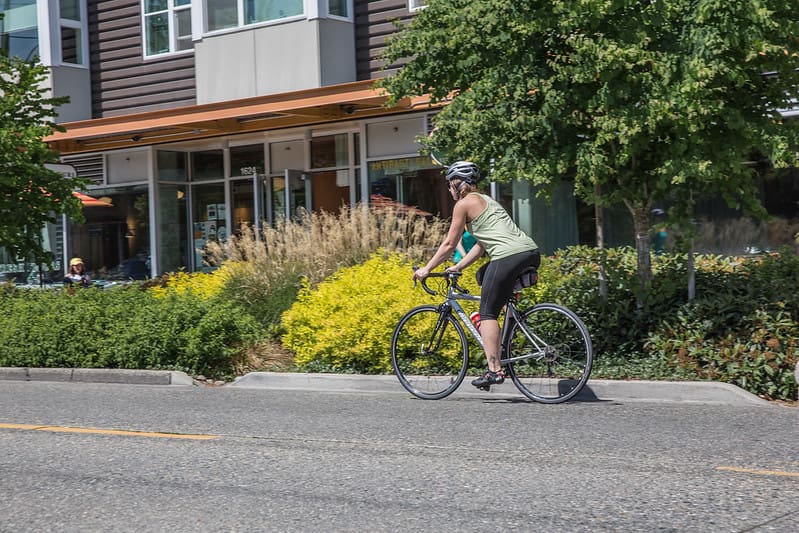Inspired and informed by annual predictions round-ups like Reframe’s narrative predictions and Grist’s climate trends, we’ve taken a crack at our best guesses of the top water stories we anticipate or hope to see each year.
Each year, we look at the water solutions on the rise and, recently, we have been thinking a lot about the word resilience. Is it a ubiquitous buzzword used as shorthand to describe climate adaptation efforts, a dirty word to allow continued harm in communities who bear the burden of polluting industries and climate impacts, or a vision of hope for a strong, healthy, thriving future? Probably a little bit of everything. In our efforts to steer water communicators away from jargon, our running list of water word alternatives suggests swapping resilience with descriptive language that shows how changes to ecosystems and our built environment give us the ability to handle and recover quickly from climate stresses like drought, weather whiplash, and extreme storms.
Let’s look at three 2024 themes underpinning a water future that will allow communities to prepare for and respond quickly to climate stress.
Re-use and recycling water
Water recycling is older than the dinosaurs — nature has been filtering and treating water for as long as water has existed. People have been reclaiming and recycling water for a long time too – to irrigate lawns, recharge groundwater aquifers, and fill our taps. In the face of a hotter, drier climate in the Western U.S., both Colorado and California took major steps to establish regulations allowing for direct potable reuse of purified wastewater (with others like Arizona not far behind). While this step is new, the reality is all water has been recycled. Even the aquifer tapped for that bottled “mountain spring” water was filled by rain made up of someone else’s evaporated dishwater or garden runoff, and we’ve long been indirectly drinking treated wastewater released into rivers upstream or groundwater supplies that are later pulled into drinking water treatment. The media has an important opportunity to educate the public about advanced purification technology without fear-mongering (reporters, please tell your editors to retire the tired “toilet water” headlines). At the same time, we’d also love to see more stories acknowledging that a cost and energy-friendly approach to water security must first reign in corporate water abuse (from fracking to data centers and factory farms) and prioritize public health and the environment.
Re-hydrate the landscape
As our friends at Bayou City Waterkeeper like to say, “water is a catalyst for change.” The systems that move water through our landscapes and communities are the foundation for public and environmental health, yet traditional infrastructure built to control water is failing in the face of extreme weather. For example, on the West Coast, we’re getting more rain than snow (depleting the mountain snowpack that is nature’s greatest water storage system!) and the deluge from atmospheric rivers brings flooded canals and streets that are hard to convert into long-term drought relief. Luckily, state and federal investments supported in part by Bipartisan Infrastructure Law and Inflation Reduction Act drought dollars are helping communities re-think water systems to work with nature, from restoring high alpine meadows to keep water upstream longer, to green streets and parks that turn urban areas into green sponges. By sinking more water into the soil or soaking it up with plants, we can better withstand the effects of both drought and flooding.
Rising rates
Water equity and affordability go hand-in-hand. Investing in safer drinking water or greener stormwater management can’t leave low-income families out to dry with hefty increases in their water bills. At a time when deferred maintenance and climate stress are driving up the costs of our water infrastructure, 1 in 3 households struggle to afford their water bill, risking missed payments and water disconnections. We’ve seen it happen in places like Benton Harbor, Michigan, where solving the lead crisis only gave way to a financial one. Federal water dollars flowing now are at last helping to tackle decades of deferred maintenance and close long-standing infrastructure gaps. We’re making strides to accelerate lead pipe replacement, and expanding water treatment in rural communities, yet this funding is still just a downpayment of what’s truly needed to keep water access both safe and affordable for all.
To stay up with the latest in water justice communications, skill-building, and new offerings, follow us on LinkedIn, Instagram, Twitter/X, and Threads and sign up for our newsletter!
Featured photo credit: Marcela Gara, Resource Media
